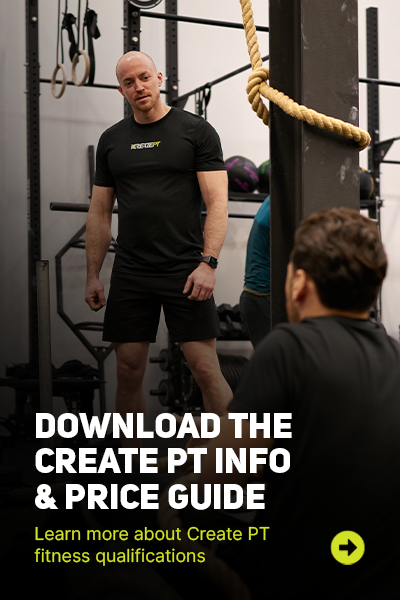Introduction
Training gym clients and online clients has considerable crossover but also differs in some key ways. I doubt there is a personal trainer out there who hasn’t considered offering online coaching in some form. Gym based personal training lends itself very well to online coaching as a side gig; the time your clients want you tends to be early mornings or evenings, which leaves a void in the middle of the day when everyone else is at work. By doing some online coaching alongside in-person coaching you can use your existing expertise to monetise your down time.
Online coaching uses some of the same skills as in-person coaching with some big exceptions. It will be more heavily focused on programming than the interpersonal skills required for coaching gym clients, this programming expertise is required for both online clients and gym clients, however the interpersonal skills required to make it in the gym are less important for online coaches.
Although there is a crossover with the skills required to coach both types of clients, your approach to marketing will have to differ significantly. It pays to be a generalist to pick up clients in a gym, whereas attracting clients online tends to be easier if you focus on a specific niche. In this article we’ll go into the different approaches required for growing a business in the gym vs online.
Gym Clients
When you step into a gym you’ll see a diverse range of punters, diligently working on a wide range of goals and fitness aspirations. There are clients of all ages, abilities and fitness levels under one roof. As a personal trainer in this environment, adaptability and a broad skill set are the most useful tools to help you appeal to as many potential clients as possible.
Within our personal training courses we teach an approach to get you earning around £50k per year from around 30 hours work per week, made up of around 15 hours of in-person coaching plus some classes and online coaching. You’ll have some clients that do one refresher session every 12 weeks and some that do 3 sessions per week, so we’d say on average to get 15 hours you’re going to need about 25-30 people on your books.
Gym clients are diverse, ranging from young adults aiming to build muscle, to older individuals focusing on improving their mobility and strength. Each client presents a unique set of goals, challenges, and preferences, requiring the personal trainer to be well-versed in a variety of training methods and motivational techniques. It’s this versatility that sets successful gym floor PTs apart, allowing them to connect with, inspire, and effectively train a wide range of individuals.
The Need For Versatility For Gym Based PTs
The average commercial gym will have somewhere between 1000-5000 members covering all demographics, goals and training abilities. The average penetration rate for personal training, meaning the percentage of members that will pay for personal training, is around 3-5%. So in a facility with 2000 members you could expect up to around 100 of them to pay for PT services.
When working in one of these facilities as a personal trainer you will likely focus all your efforts on the member base, rarely venturing outside the facility to pick up and train clients. As such you have a set pool of members to target, there will be natural monthly attrition in the member base with members coming and going but this will typically be around 3-5% of the membership each month so you’ll see a lot of the same faces over and over again.
People go to the gym for all sorts of reasons, their underlying reasons can vary enormously, but the overarching goals for most people will fit into a few broad categories. Build muscle, lose fat, get fit for an event or improve overall health, will likely be the main goals of most gym clients. Within each of these categories you could specialise further, for example women that want to lose fat. You could then specialise even further to women in their 30’s that want to lose fat. As a percentage of the whole population this is still a huge number of people, but by specialising this much within a gym setting you would be cutting your potential customer base down significantly.
There just aren’t enough people at a single gym facility to justify specialising in a specific niche. Even specialising in women would cut out half your potential audience, when you consider an average facility might have 100 people willing to pay for PT, do you want to cut that down to 50 people?
Having a broad appeal does not mean you should not develop specific skills, as these can still be used with a range of potential clients. For example learning to use pads for boxing workouts might appeal to a handful of members, learning kettlebells might appeal to a few more, offering small group HIIT workouts might appeal to some more. By combining a range of niche skills you can appeal to a broader audience without being “the boxing PT” for example that only people interested in boxing go to.
Online Clients
As discussed in the introduction, online coaching is the perfect complement to coaching gym clients. Rather than having down-time while your potential clients are at work you can use the time to write programmes for online clients, build your online presence and improve your digital marketing.
While the potential market size for a gym-based PT is the 1000-5000 members of the club they work in, the potential market size for an online coach is the entire population, or at least anyone you can reach through online channels. It is for this reason that you’ll struggle to be successful taking the same approach online as you do in the gym.
Don’t try to be something for everyone, just be everything for someone.
This quote really does apply when it comes to online coaching. Let’s assume that you’re only appealing to UK based customers and that half the population are on social media, that leaves us with around 35 million people. Let’s now assume that 10% of them might be interested in online fitness services, that leaves 3.5 million people. To build a successful online coaching business you probably need between 5-50 clients depending on the approach you take. So you need around 0.000007% of the people that are interested in online fitness services to sign up with you to build a successful business.
Can you now see why trying to appeal to everyone online is not only unnecessary but a waste of time. Instead, by focussing on a very specific niche you can be extremely targeted with your marketing, but still have an audience big enough to build a successful business with online clients.
Let’s figure out some rough figures as an example. Based on there being 3.5m potential online clients, half of these are women, so that leaves 1.75 million. Around 20% of the population are aged 25-39, so that leaves 350,000 women (still a HUGE audience), let’s say around 40% will have the goal to lose fat, that leaves us with 140,000. Even this audience is way too big for you to focus your marketing effectively, you still only need 0.00017% of this audience! So let’s niche down further, around 5% of the UK population are shift workers, so of the 140,000 audience around 7000 are female shift workers, interested in online fitness services, aged 25-39 with a goal to lose fat.
Now you have an audience bigger than most commercial gyms, made up entirely of your exact target demographic that you can advertise to. You may still pick some people up from outside this specific niche, but you only need around 0.003% of this audience to build a successful online coaching business. You can tailor your adverts, the wording, the images, the goals, the approach, the results, testimonials of other similar clients, the time of day you post on social media, the pain points of those specific clients.
Compare this with trying to come up with a marketing campaign to target anyone with an interest in online fitness services. As a 33 year old overweight nurse working shifts for example, if you saw an advert for an online coach who helps women exactly like you vs an advert for an online coach who helps anyone get fitter and healthier, which one are you likely to go with?
The above is just an example of the sort of numbers that might make up a specific niche. We don’t recommend finding a niche in this way, as you want to be able to speak effectively to your niche. The best way to be able to do this is to target a niche that you resonate with as an individual. It may be based on your own past experiences, your speciality as a coach, your hobbies or anything you can think of that might help you appeal to others with those same traits or interests.
For example if you’re a male powerlifter, trying to appeal to this audience on social media will be very difficult. However maybe you also balance this with a busy office job in the city and you have 2 kids under 10. Now you could target busy working dads wanting to improve their strength, a much smaller audience, although probably still a huge one.
Conclusion
As you can see from the above, any qualified PT could build a successful gym based PT business by being a generalist, while still being able to differentiate themself in the enormous online market by specialising in something very specific to them.
We recommend a blended approach for most coaches, there are tons of pros and cons of both models, but by offering both you don’t have all your eggs in one basket and you can use your time more wisely to maximise your income.
If you need more help defining a niche you can target for online clients or you’re struggling to generate in-person gym clients please get in touch or check out some of our online personal training courses, we have tons more information on all the above.







